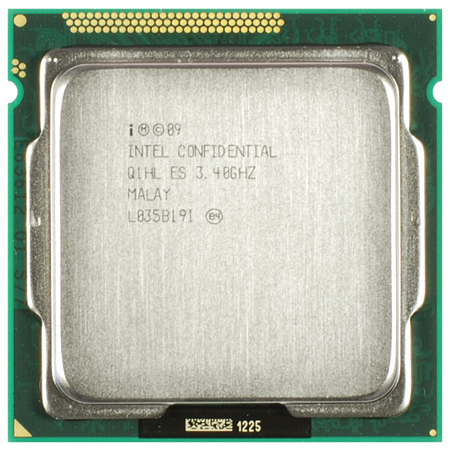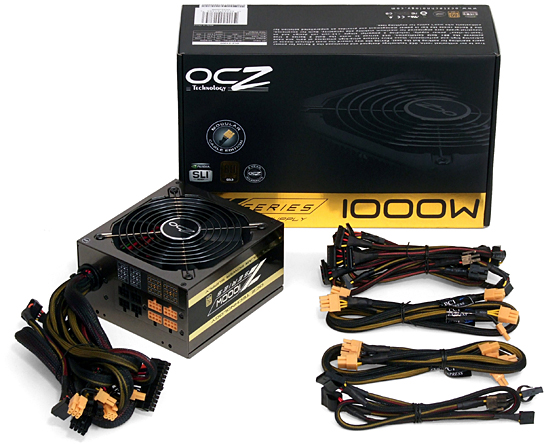Triple-GPU Scaling: AMD CrossFire Vs. Nvidia SLI
Two GPUs are great, but are three that much better? When it comes to multi-card scaling, can AMD finally beat Nvidia? Who really needs this much performance? We loaded a super-fast system in single-, dual-, and triple-GPU configurations to find out.
Test Settings
| Test System Configuration | |
|---|---|
| CPU | Intel Core i7-2600K (Sandy Bridge) LGA 1155: 3.40-3.80 GHz, 8 MB L3 Cache Overclocked to 4.00 GHz at 1.25 V |
| Motherboard | Asus P8P67 WS Revolution: LGA 1155, BIOS 1007 (01/24/2011) Intel P67 Express, Nvidia NF200 PCIe Bridge (2 x PCIe 2.0 x16) |
| RAM | Kingston KHX2133C9D3T1K2/4GX: 2 x 2 GB, DDR3-2133 at DDR3-1600 CAS 7-7-7-21, 1.60 V |
| Hard Drive | Western Digital WD1002FBYS: 1 TB, 7200 RPM, SATA 3Gb/s, 32 MB cache |
| GeForce Graphics | Asus ENGTX570/2DI/1280MD5: 742 MHz GF110 GPU, 1280 MB GDDR5-3800 |
| Radeon Graphics | XFX HD-695A-CNFC: 800 MHz Cayman GPU, 2 GB GDDR5-5000 |
| Sound | Integrated HD Audio |
| Network | Integrated Gigabit Networking |
| Power | OCZ-Z1000M: 1000 W Modular, ATX12V v2.2, EPS12V, 80 PLUS Gold |
| Software | |
| OS | Microsoft Windows 7 Ultimate 64-bit |
| GeForce Graphics | GeForce/Ion 266.58 |
| Radeon Graphics | AMD Catalyst 11.1 |
| Chipset | Intel INF 9.2.0.1019 |
CPU “bottlenecks” are always a problem at medium (and lower) resolutions. Today’s tests start at medium resolutions, so we clocked Intel’s Core i7-2600K to 4.0 GHz in an effort to minimize that issue.
The Achilles-heel of Intel’s fastest processor is a platform that supports only sixteen PCIe 2.0 lanes directly from the processor to the graphics card. Asus solves that solution by incorporating Nvidia’s 32-lane NF200 bridge, thereby repeating the same information at full bandwidth to two cards simultaneously. Triple-GPU mode operates in an x8/x8/x16 configuration, as it would with most X58 motherboards.
Power might be the price for performance, but we wanted to see if it also scaled with performance as GPU numbers increased. OCZ’s 80 PLUS Gold-rated Z1000M provides that clean power while adding only around 11% overhead at our watt meter.
| Benchmark Configuration | |
|---|---|
| 3D Games | |
| Aliens Vs. Predator Benchmark | Alien vs Predator Benchmark Tool Test Set 1: Highest Settings, No AA Test Set 2: Highest Settings, 4x AA |
| Crysis | Patch 1.2.1, DirectX 10, 64-bit executable, benchmark tool Test Set 1: Highest Quality, No AA Test Set 2: Highest Quality, 4x AA |
| F1 2010 | v1.01, Run with -benchmark example_benchmark.xml Test Set 1: Highest Settings, No AA Test Set 2: Highest Settings, 4x AA |
| Just Cause 2 | Version 1.0.0.2, Built-In Benchmark "Concrete Jungle" Test Set 1: Highest Details, No AA, 16x AF Test Set 2: Highest Details, 4x AA, 16x AF |
| S.T.A.L.K.E.R.: Call Of Pripyat | Call Of Pripyat Benchmark version, all options, HDAO Test Set 1: Ultra Preset, DX11 EFDL, Ultra SSAO, No AA Test Set 2: Ultra Preset, DX11 EFDL, Ultra SSAO, 4x MSAA |
| Synthetic Benchmarks and Settings | |
| 3DMark 11 | Version: 1.0.1.0, Benchmark Only |
Get Tom's Hardware's best news and in-depth reviews, straight to your inbox.
Current page: Test Settings
Prev Page Is Multi-GPU The Game Changer? Next Page Benchmark Results: 3DMark 11-
tacoslave wow even though a 6950 is weaker than a 570 it dominates at higher resolutions eyefinity here i come.Reply -
scrumworks Impressive and unexpected results. Speculations that crossfire scaling is worse than SLI can finally be put into rest.Reply -
aznguy0028 scrumworksImpressive and unexpected results. Speculations that crossfire scaling is worse than SLI can finally be put into rest.Not true, I would have liked to see more games on the test. The choices were too limited for my taste. For example, everyone knows that Crysis is heavily Nvidia favored, so it's not surprising to see those results in the least.Reply
Here's another article on the 68xx series in Xfire
http://www.xbitlabs.com/articles/video/display/radeon-hd6870-hd6850-crossfirex.html#sect0
Xfire scaling was found to be 100% on 10 or the 19 games they tested, and remaining very high on the others. Nvidia and ATi seems to trade blows at different games tested, but it is evident that Ati has stepped up their Xfire drivers int he 6xxx series. -
aznguy0028 scrumworksImpressive and unexpected results. Speculations that crossfire scaling is worse than SLI can finally be put into rest.I misunderstood what you meant. But yes, xfire/sli scaling has improved alot this generation :)Reply -
liquidsnake718 Now im thinking if i should even spend on a now older 5850 to crossfire on my X58.Reply -
bavman Its really cool to see amd stepping up their game. Multigpu scaling used to be only good on nvidia, but now amd is beating them. Though i feel that more games should be tested before a firm conclusion should be drawn.Reply -
anubis44 No! Don't buy a 5000-series card to crossfire. The 6000 series cards are essentially all better at crossfire scaling than their predecessors. This performance advantage will likely only increase with additional driver revisions and better 6000-series optimization support than for older products.Reply



